In the largest metropolis of the Amazon, clean water restores dignity to communities
31 de October de 2025
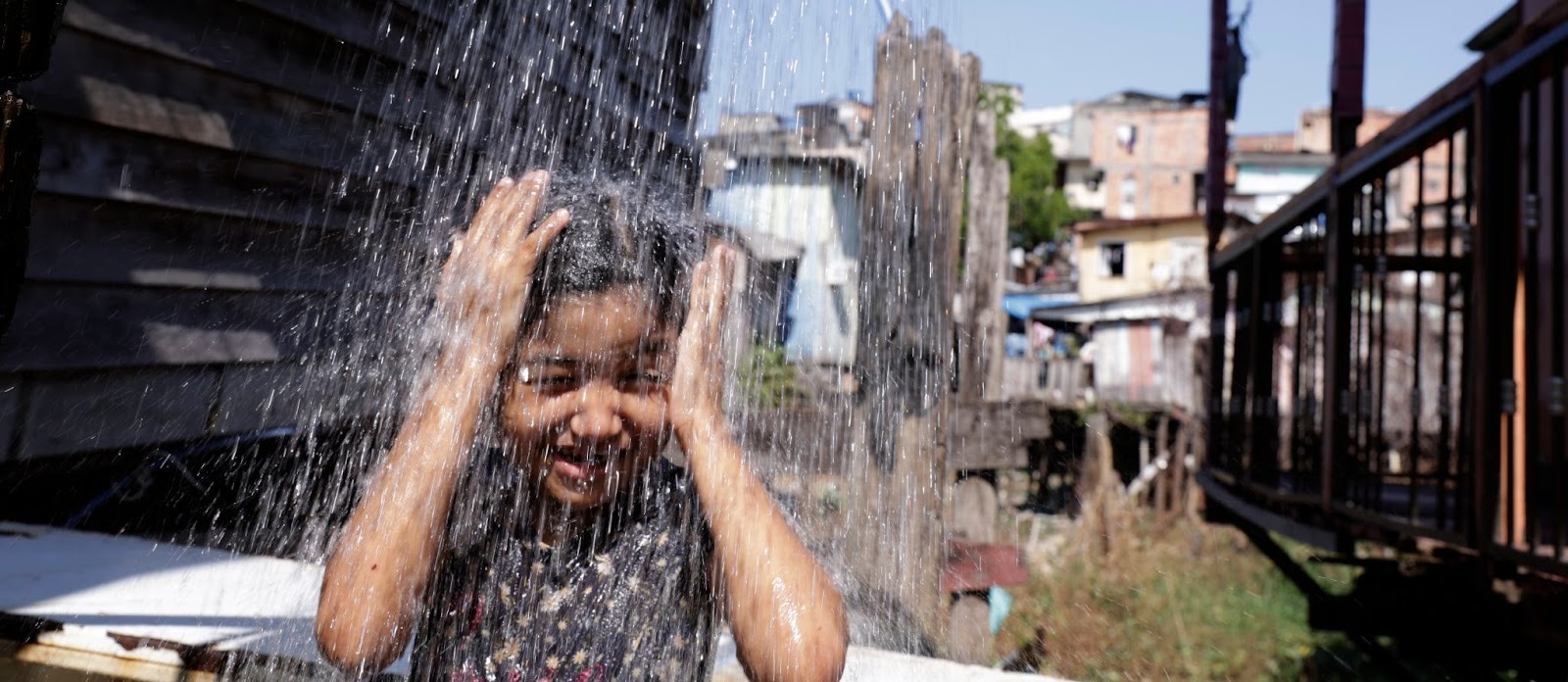
By Alinne Bindá – From Cenarium
MANAUS (AM) – In the Educandos neighborhood, one of the oldest in Manaus (AM), the largest metropolis in the Amazon, wooden houses balance on stakes along the banks of the Rio Negro and turn into palafitas, dwellings built in flooded or riverside areas. From the elevated walkways, one can see, on one side, the buildings rising from the asphalt, and on the other, the movement of the river’s ripples. The air carries the scent of fresh water mixed with boat fuel. Now, a new sound joins the daily symphony of the neighborhood: the sound of running taps.
For a long time, Educandos, in the southern zone of the Amazonian capital, relied on the water brought by the river: muddy, unpredictable, sometimes generous, sometimes cruel. When it rose too high during floods, it invaded homes; when it dropped during drought, it left behind trash and mud. Today, water arrives through suspended pipes that rise and fall with the tides. The steady flow represents more than just a service, it marks the return of a right.
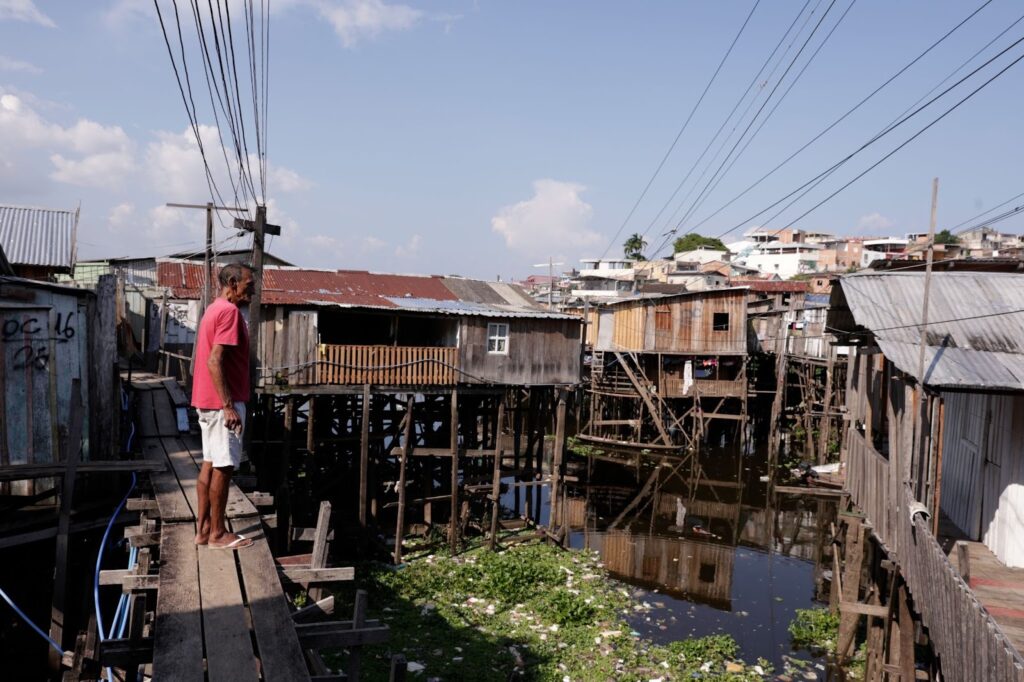
The walkways, which sway with each step, lead into a labyrinth of homes built over the water’s surface. Through the gaps in the wooden floors, the stream still runs, but now there is another current: that of treated water flowing from the taps. Colorful clotheslines cross the alleys, children play barefoot on the planks, and families are learning to live with a new routine of hygiene, bathing, and care.
A resident of the neighborhood for over three decades, Vanderlan Rodrigues, 39, recalls the days when floods brought disease and despair. “When the water rises, it brings dead dogs, dead cats, human waste. People were always getting sick. Today, with treated water in the tap, hope has returned to us,” he says, while his son watches a pig rolling in the mud beneath the house.

Vanderlan opens the tap and lets the water run over his hands, as if to confirm that the change is real. The supply system, however, requires constant vigilance. The pipes that cross the stream must be lifted when the river level rises, to prevent polluted water from entering the network.
“The technicians come often. They inspect, replace the pipes, and lift the branches. If a pipe stays underwater, there’s a risk of an epidemic,” explains Vanderlan, recognizing the collective effort that keeps the system running. “They make sure the water reaches us clean, that’s what matters,” he adds, emphasizing that constant maintenance of the network is essential to ensure water quality.
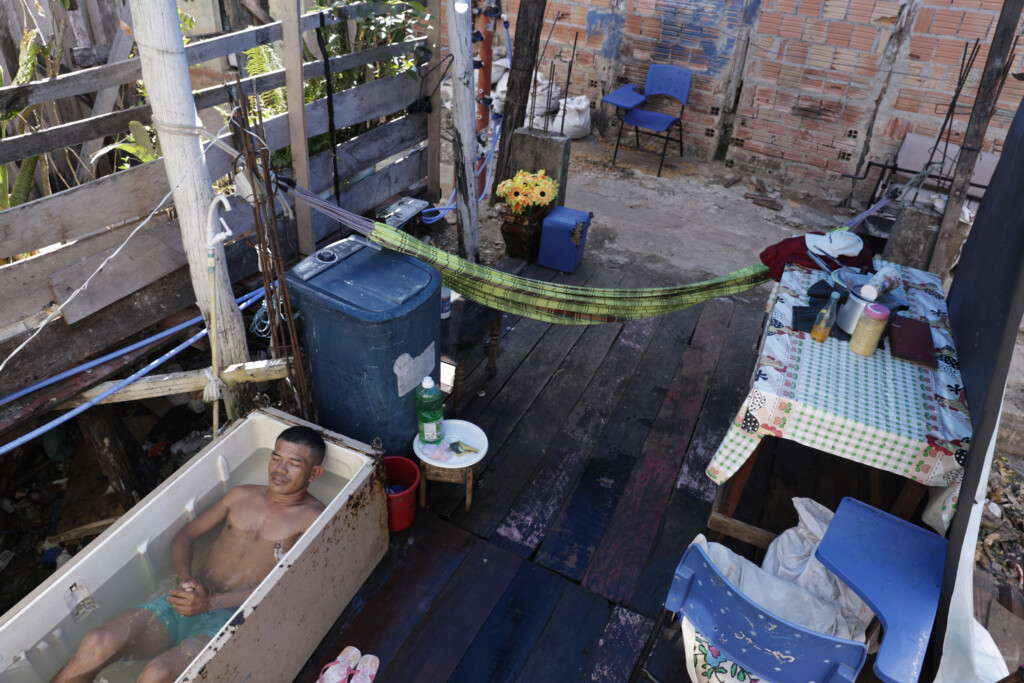
The challenge of carrying water over the river
Behind this daily routine lies an engineering effort that defies the Amazon’s geography. The suspended networks, implemented by the Águas de Manaus concessionaire, responsible for water supply, sewage collection, and treatment services in the city, were adapted to the rising and falling river levels and to the fragile structures of the stilt houses.
“These areas were mapped, and when the flood season starts, the connections are lifted and suspended. In Educandos, Beco Inocência, and Manoel Urbano, we serve 500 families and 150 branches, with 800 meters of aerial network installed,” explains Paulo Ricardo Silva, the company’s commercial manager. “It’s a challenging job, but we remain committed to delivering clean water with safety and dignity to every resident,” he says.
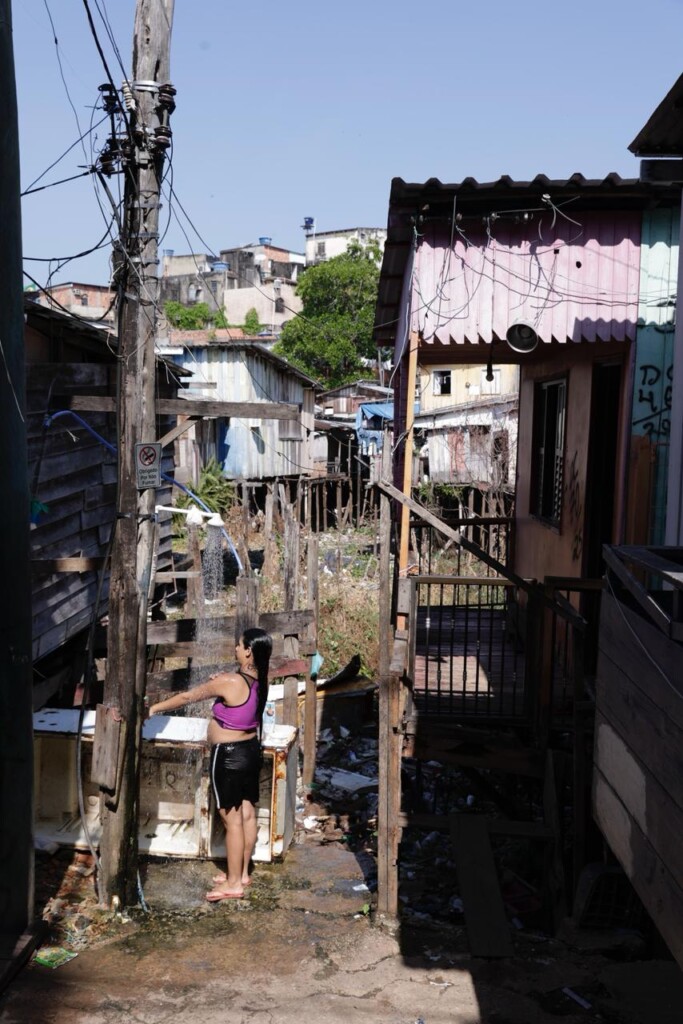
Beco Nonato: pioneering sewage treatment
In Beco Nonato, located in the Praça 14 neighborhood, Brazil’s first aerial sewage collection and treatment network in a flood-prone area was implemented. The suspended pipes carry household waste to the Educandos Treatment Station, preventing contamination of the waterways.
Resident Mikaelly Dirane, 32, describes the transformation: “Before, sewage went straight into the stream under the houses. Now, with the network installed, everything has improved. We pay only ten reais in the fee, it used to be up to fifty. That changes everything in our lives.”
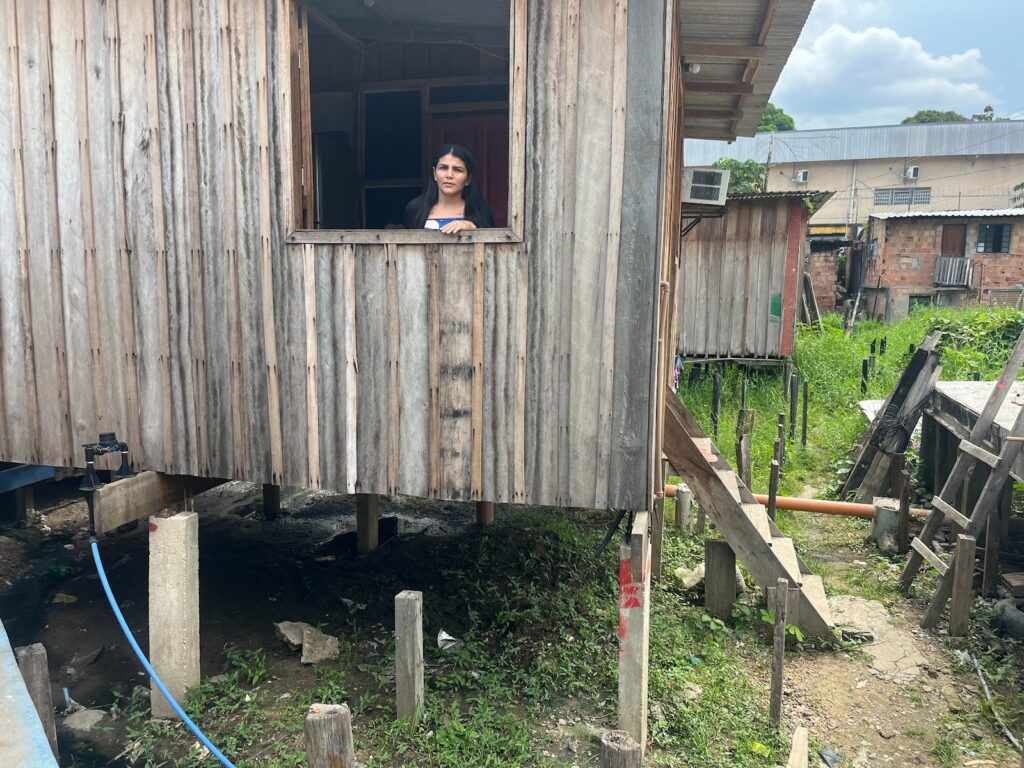
Universal right and State duty
Ensuring access to treated water and basic sanitation is a fundamental human right, recognized by the Federal Constitution and international treaties. In 2024, the Senate approved a constitutional amendment that included basic sanitation among the country’s social rights, alongside health, education, and housing, reinforcing the State’s obligation to guarantee universal access to these services.
At the international level, the Universal Declaration of Human Rights and resolutions from the United Nations (UN) recognize access to safe drinking water and sanitation as fundamental conditions for a dignified life. Universalizing sanitation is therefore an act of equity: it reduces inequality, improves public health indicators, and drives sustainable development.
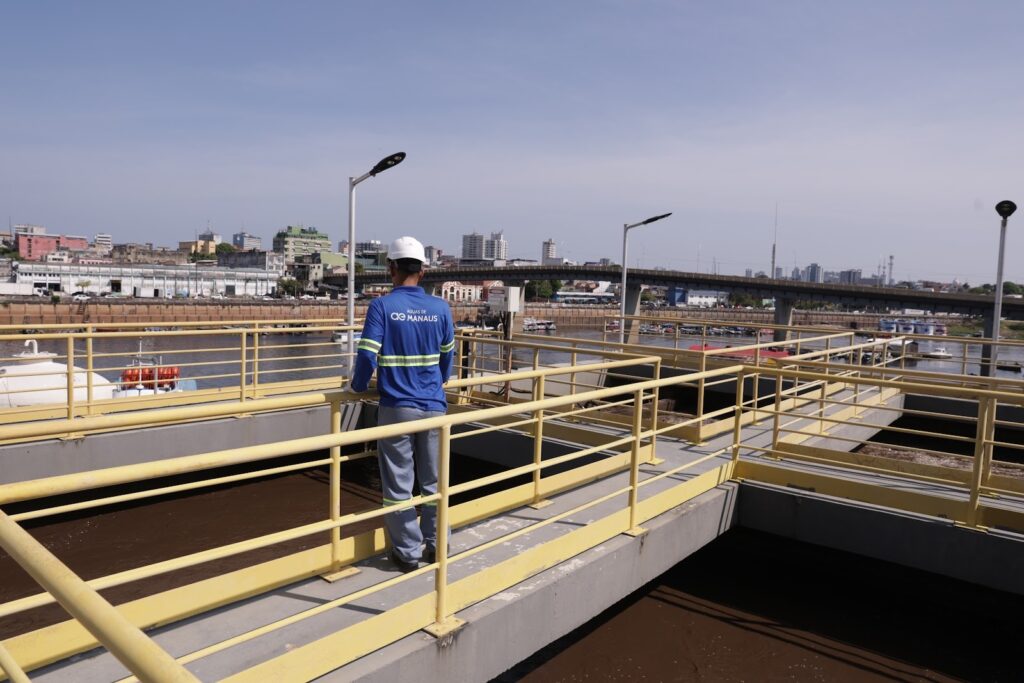
Progress and challenges in Manaus
In Manaus, more than 2 million inhabitants depend on the water supply system operated by Águas de Manaus. Since 2018, about R$ 1.6 billion have been invested in expanding the network, modernizing systems, and implementing solutions adapted to local geography, especially in stilt-house areas and along streams. The city has reached 97% coverage of treated water, according to data from the Instituto Trata Brasil, a rate higher than the average for the capitals of the North Region (64%) and close to the national target set for 2033.
“Universalization in Manaus follows two paths: water and sewage. The water goal has already been achieved, including in the stilt-house areas. By 2033, we will also achieve universal sewage coverage. Currently, we are at 34%,” explains Paulo Ricardo Silva, commercial manager of Águas de Manaus.
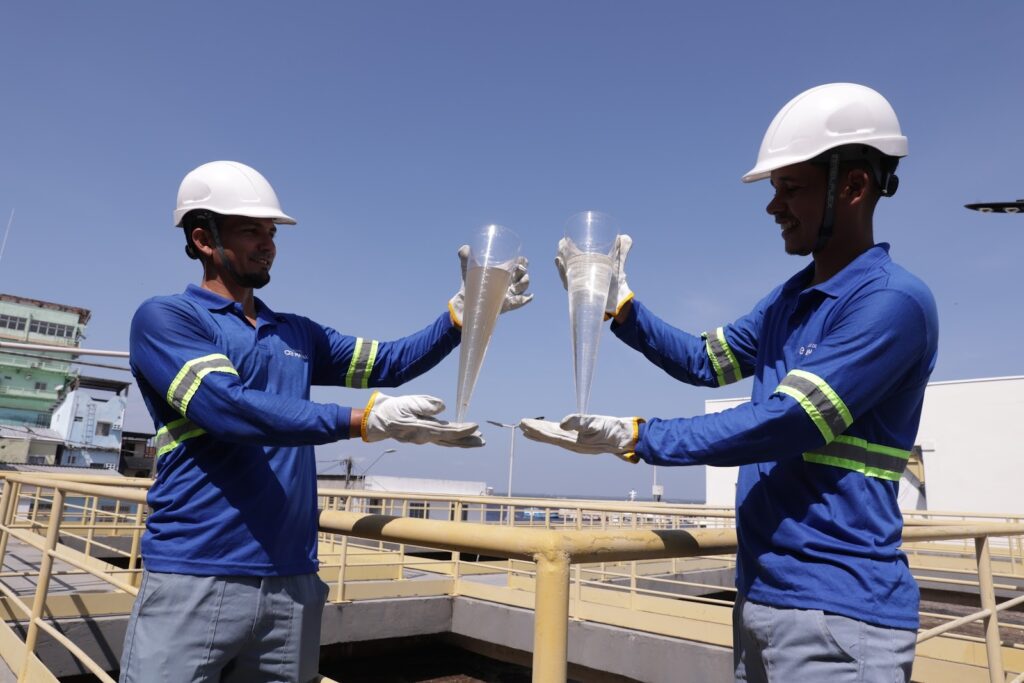
Advances in sewage treatment are being achieved through projects that combine traditional engineering and decentralized solutions tailored to terrain conditions and river level fluctuations. In these areas, aerial networks and suspended systems help maintain service continuity during floods, reducing contamination risks.
Even amid major structural challenges, Manaus stands out in the North Region’s sanitation indicators. Investments have resulted in reduced water loss, expanded sewage networks, and improved water quality, essential elements for consolidating public policies aimed at universal access and promoting the health of both riverside and urban populations.

